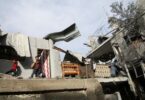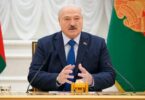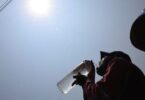Monitoring Desk
KARACHI: Liaquat University Hospital, one of the three approved clinical trial centers for convalescent plasma in Pakistan’s southern Sindh province, announced on Wednesday it was treating a 53-year-old COVID-19 patient through plasma therapy.
“When the patient’s health condition deteriorated, we gave him double oxygen without putting him on ventilator,” Dr. Aftab Hussain Phull, focal person of the health facility in Hyderabad, told Arab News on phone.
“The family of the patient wanted him to undergo the trial treatment,” he said, adding there had been significant improvement in the health of the patient since the beginning of the therapy three days ago, though he admitted it could not be ascertained if it was due to the plasma therapy.
“Incubation can also improve a patient’s health condition and we will have to assess the results properly,” he continued.
Passive immunization is not a new medical treatment and has been done for the last 125 years. In Pakistan as well, the 53-year-old patient is among several who are undergoing this therapy.
“Passive immunization was used to cure patients of diseases like SARS, Ebola and influenza in recent memory,” Dr. Tahir Shamsi, a renowned haematologist and Head of National Institute of Blood Diseases (NIBD), told Arab News.
He said that a coronavirus patient usually took about ten to twenty days to recover.
The objective of carrying out passive Immunization clinical trials in Pakistan, he added, was to see how many COVID -19 patients could be prevented from being put on ventilators. If 70 to 90 percent were saved, he continued, it would be a huge success.
“It will also tell us when to transfuse plasma and which category of COVID-19 patients will benefit from it,” Shamsi said. “Since the results of clinical trials have not been published yet, their effectiveness cannot be gauged.”
He informed that these trials were conducted in a controlled manner to respond to specific research questions, adding that the answers would help determine the benefits of the treatment along with any side effects.
Explaining the procedure, Shamsi said three weeks after a COVID-19 patient tests negative, doctors acquire his plasma.
“As per protocol, one-liter plasma is taken, bifurcated and saved. Tests are done to see if Immunoglobulin G antibodies have developed. The blood is also checked for transmissible diseases like HIV, hepatitis and malaria. It’s also seen if any effect of coronavirus is still present or the disease has completely vanished,” he said, adding that there was a set procedure to transfuse plasma in patients’ bodies once it was ready.
He continued that the process required regular monitoring and lasted for about four to six hours.
Shamsi said it took a patient 24 hours to stabilize after transfusion, adding that another four to five days were required to reach a level where the patient could be removed from oxygen.
He added that the National Health Services in Britain recently established clinical trials in the whole country and requested the recovered COVID-19 patients to donate their plasma. The United States had also started clinical trials for passive immunization where a large number of individuals had registered themselves to give plasma.
“We will have to start a mass mobilization campaign to get donors in Pakistan at the earliest,” Shamsi said, adding: “The country will need them in large numbers in the foreseeable future.”
“We are moving toward our peak,” he continued while pointing out that Pakistan could have 70,000 to 75,000 patients within three to four weeks.
“When we hit the peak, a large number will move to hospitals. Everyone should come forward and donate convalescent plasma,” he said.
Shamsi also informed that one person’s plasma could save two people’s lives.
Courtesy: (Arabnews)






